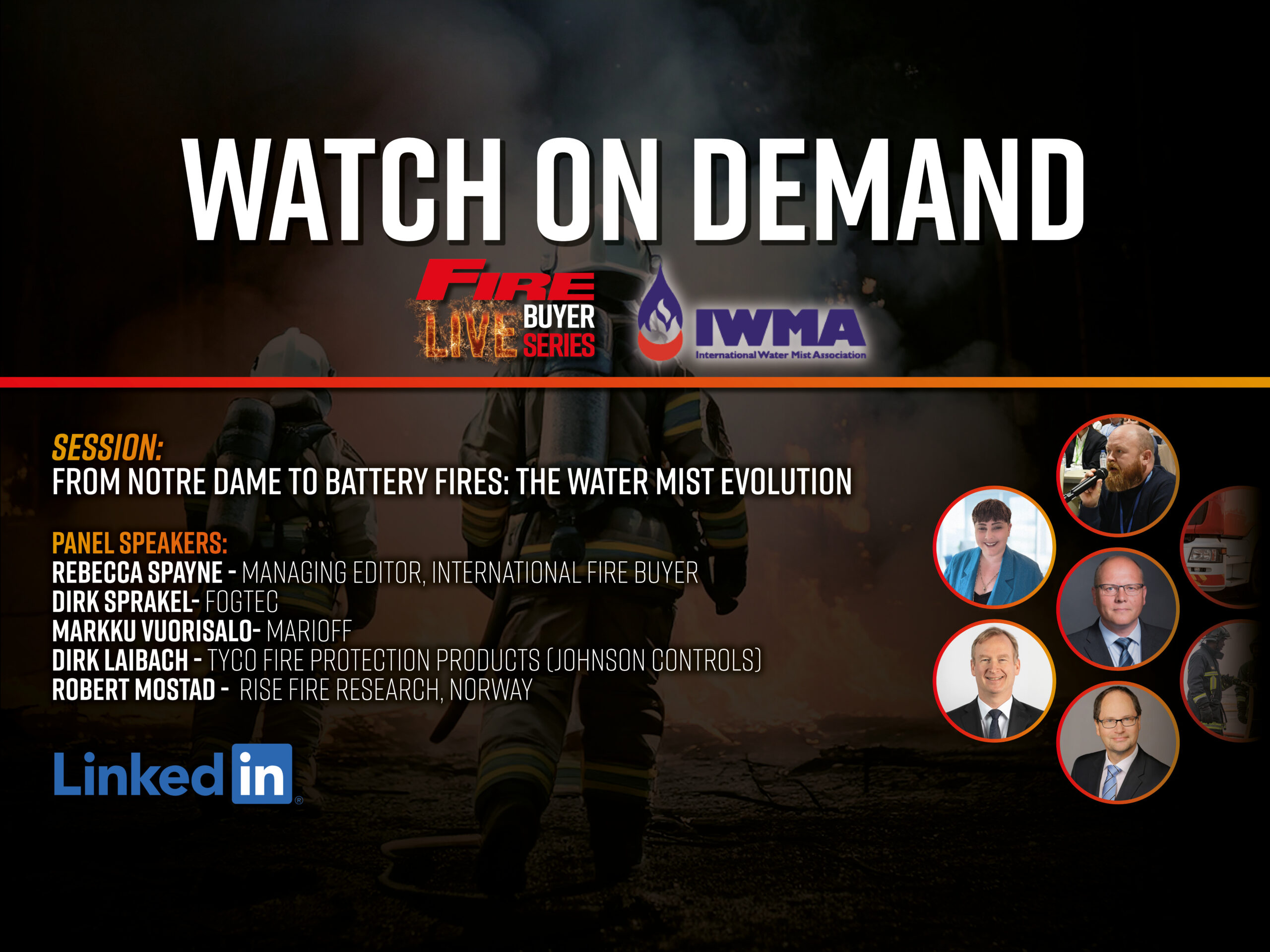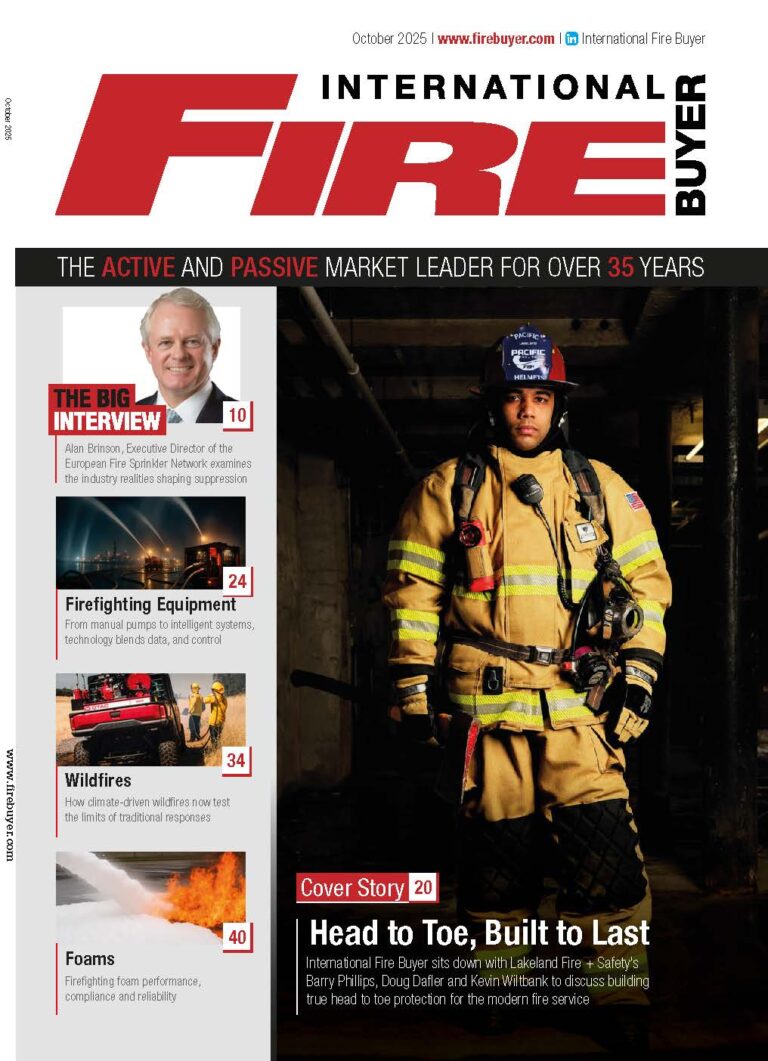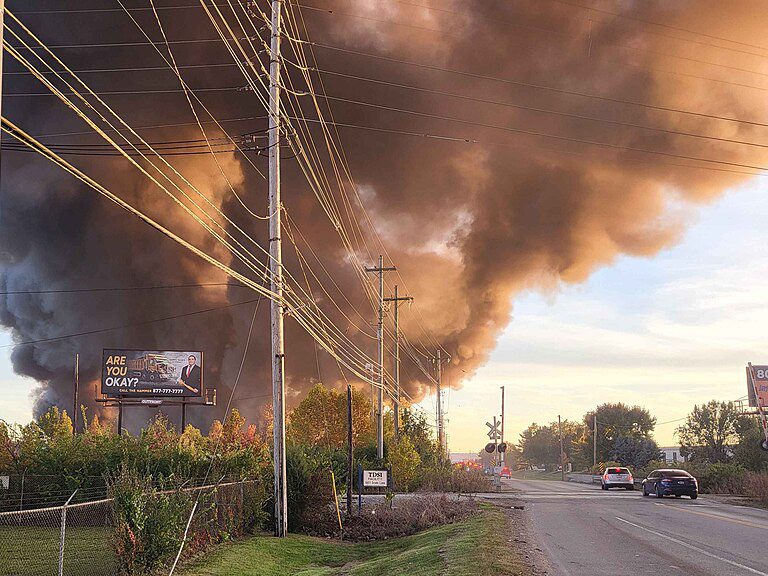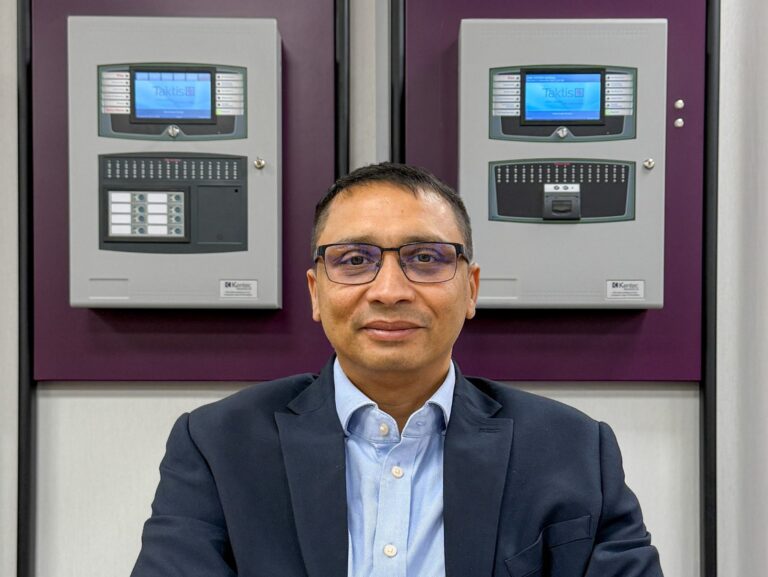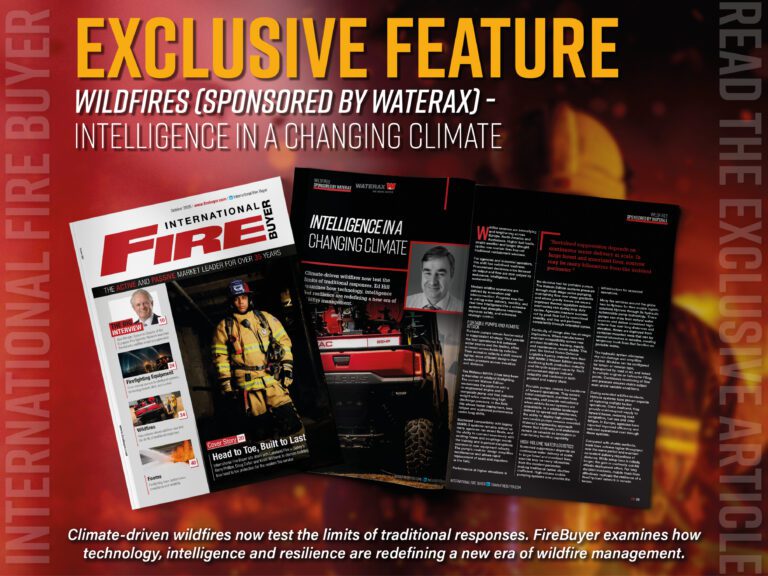As fire services pivot away from PFAS-based agents, Paul Joseph explores how manufacturers are reshaping firefighting foam for a future where environmental safety is as critical as suppression power.
The global fire safety sector stands at a crossroads. With mounting pressure to eliminate harmful per- and polyfluoroalkyl substances (PFAS) from suppression systems, the industry is undertaking one of its most consequential transitions in decades.
Firefighting foams—long valued for their effectiveness against flammable liquid fires—are now under scrutiny not just for how they perform during an incident, but for what they leave behind.
Regulatory bodies across Europe and North America have made their intentions clear: fluorinated foams have no place in the long-term future of fire protection. Yet while the case against PFAS is scientifically well established, the operational path forward is anything but straightforward.
For foam manufacturers, fire services, and industrial users alike, the challenge lies in delivering the same critical performance under pressure—without compromising environmental integrity.
From formulation science to procurement planning, the shift toward fluorine-free foams is not just a technical upgrade—it’s a fundamental rethinking of how we live with, fight, and recover from fire.
Beyond the ban
While many in the sector have viewed the transition to fluorine-free foam as a matter of compliance, industry leaders argue that it presents a rare opportunity to re-evaluate the fundamentals of fire suppression.
VS Focum’s work on biodegradable, fluorine-free foam concentrates has placed them at the forefront of this conversation. The company’s formulations have been designed not only for environmental safety but to meet high burnback resistance and drainage time performance metrics essential for real-world reliability.
Alberto Acuña, International Sales at VS Focum, says, “Our Silvara range of fluorine-free foam concentrates is designed with usability first — requiring no changes to existing equipment and performing reliably in high-risk scenarios. We prioritise efficacy that clients can deploy immediately and effectively, supported by environmental reports.
“We believe firefighting foam should be simple to use, effective in action, and developed with safety in mind. We don’t linger on the fringe—and neither should anyone protecting their world, their business, or their life.”
Europe’s evolving regulatory landscape—driven by initiatives such as the EU Chemicals Strategy for Sustainability—has led to stricter scrutiny of all persistent and bioaccumulative substances. As a result, fire services across the continent are being forced to rethink procurement, training, and maintenance protocols.
While most headlines focus on legislative deadlines, the real work is being done in workshops, fire stations, and logistics depots—where procurement officers, safety engineers and front-line crews must make the switch from tried-and-tested products to next-generation foams. It’s a transformation playing out not just in specifications but in trust, requiring foam producers to prove their solutions under real-world stress.
Closing the gap
One of the greatest challenges for foam manufacturers has been matching the suppression capabilities of legacy AFFF (aqueous film-forming foam) without the aid of fluorinated compounds. Dr Sthamer, a long-established name in the firefighting foam space, has responded with a research-driven approach that places equal emphasis on extinguishing speed, environmental footprint, and application versatility.















